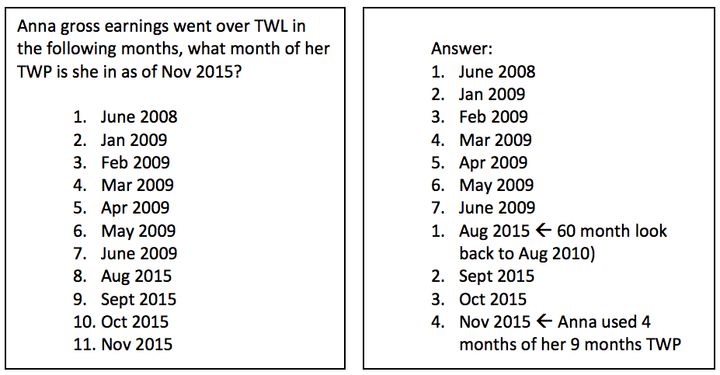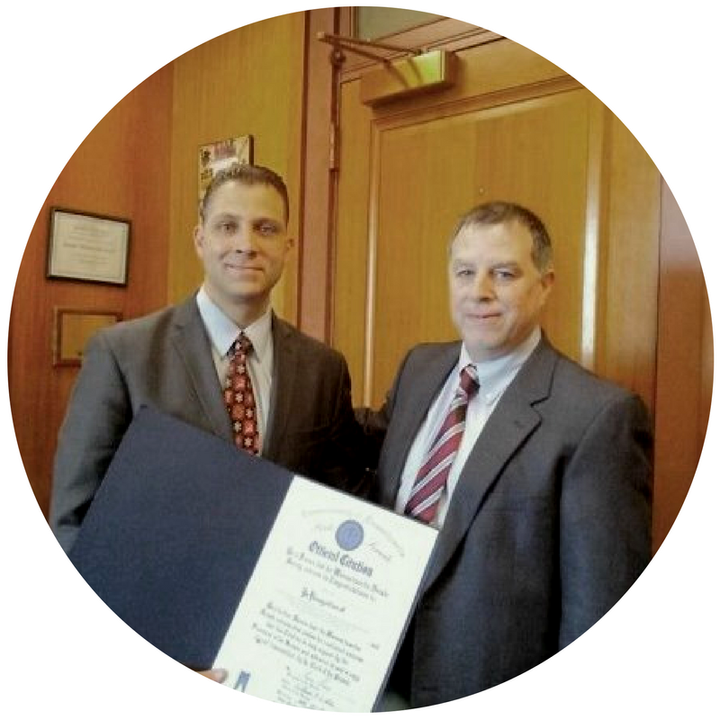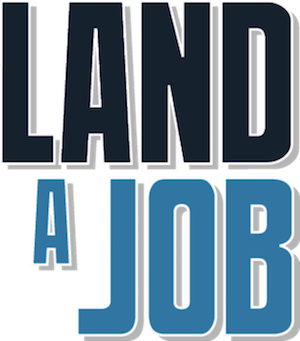My daughter Sara Ruh was born with Down syndrome in 1987. She has worked since she was 16 years old but our reality is that she still needs our financial support. She lives at home and may for the rest of her life. We love having her at home and have built her a space that works for a young woman of 29 years old.

Recently, I interviewed Mary Glanden a Program Specialist for LandAjob. She is an expert with the Ticket To Work Program. I hope you learn as much as I did about this program that supports persons with disabilities.

Debra: Tell us more about the Ticket to Work Program.
Mary: If I had a penny for every time someone said, “I can’t live on my disability income,” I’d probably have $8.43. No kidding! The most common thing I hear is that it is hard to live on disability income, however, the biggest fear, and one of the most misunderstood topics, is that I will lose my benefits if I work. I hope through this article, we will be able to dissect the Ticket to Work program and dispel some of the misconceptions about work and its impact on benefits.
Debra: You are right Mary. Many families in the United States including my family are very confused about this program and other social security programs. So what is Ticket to Work?
Mary: The Ticket to Work program (TTW) is a Social Security initiative for individuals with disability who wants to work and move towards economic independence. Anyone ages 18- 64, who receives Social Security Disability Insurance (SSDI) and/or Supplemental Security Income (SSI) benefits because of his or her disability is eligible to participate in the program. The program is voluntary and the services offered are free. The goal of the program is to offer you the support you need to work for the chance of becoming and staying economically independent. By agreeing to participate in the program, you will not be penalized if you do not achieve self-sufficiency, however, you must be willing to make a good faith effort.

Debra: Thanks for the helpful answer. How does the program work?
Mary: It works in two significant ways. First, it helps you get back to work and second it protects your benefits. Let’s explore both of these topics:
Getting back to work: TTW has contracted many agencies to help you get back to work. These agencies are funded by TTW so their services to you are free! Together they form what TTW calls The Employment Team. (Cue the wind machine and the Avenger’s theme song). First, there is the Vocational Rehabilitation (VR); they’re probably the Captain America of the team in that they are the most well-known. Then there are the lesser well-known Employment Network (EN) and Workforce Employment Network (WF). These 3 Employment Teams help you get back to work. Depending on which stage of employment you are at, each team offers something different so that one will fit your specific needs. For example, if you haven’t been in the workforce for some time, perhaps an agency offering training might be helpful. If you are looking specifically for at-home positions, maybe an agency offering job placement in at-home work might fit your need. If you are already working, an agency offering ongoing employment support and work-reimbursements might be just what you need. And last but not least, there are two special Employment Teams: Work Incentive Planning and Assistance (WIPA) and Protection Advocacy for beneficiaries of Social Security (PABSS). WIPA offers benefits counseling to help you understand how work and earnings impact your benefits, healthcare and other public benefits. They are really the first Team you should talk to when deciding if work is right for you. Finally, there is the PABSS, they are your legal team. They provide the legal support, advocacy and information you need with resolving employment-related concerns. VR, EN, WF, WIPA and PABSS, these 5 types of agencies form your Employment Team.

Debra: Mary, another part of this topic includes Work Incentives. That seems to cause a lot of confusion. Can you tell us more about Work Incentives?
Mary: Sure Debra. Work Incentives are the benefits and protections that allow you to keep your cash benefits and healthcare coverage until you achieve self-sufficiency. It allows you to explore work without worry. But different work incentives apply to different benefits. If you are receiving SSDI, your work incentives are vastly different than someone receiving SSI. In order to know which work incentives apply to you, you need to first know the benefits you are receiving. I can’t stress this enough, knowing which benefit you receive is very important! To find out which benefits you receive, please refer to the resources at the end of the article. There are two types of Social Security disability benefits: Social Security Disability Insurance (SSDI) and Supplemental Security Income (SSI). You can receive both SSDI and SSI.
There are several Work Incentives for SSDI, but for brevity sake, we will look at 3:
- 9 month Trial Work Period
- 36 months of Extended Period of Eligibility
- Expedited Reinstatement
The 9 months Trial Work Period is one of the best work incentives. The 9 months are within a 60 months period (5 years). It is not 9 consecutive months. It is 9 months that could be scattered over a period of 5 years. You use 1 month when you earn Trial Work Level (TWL) $810 in 2016 ($780 2015 and $770 in 2014). You can keep receiving benefits no matter how much you work and earn, even above Substantial Gainful Activity (SGA), until you use up all 9 months.
Debra: Can you give us some examples Mary?
Mary: Sure Debra let’s review the example below.
Example #1: How to calculate TWP

For SSDI, income is calculated by pay period (pay beginning and pay ending dates), not paid date (or check date).
After the 9 months Trial Work Period, you enter the 36 months of Extended Period of Eligibility (EPE). For 3 years, for the months your earnings are below SGA $1130 non-blind and $1820 for blind in 2016 ($1090/$1820 2015 and $1070/$1800 2014), you get SSDI. For the months above SGA, you do not get SSDI. During this 3 years, your SSDI benefits are reinstated right away, no application.
Now after your 3 years and 9 months, if you suddenly find yourself unable to work, you can file for Expedited Reinstatement (EXR). You have 60 months (5 years) to use your EXR work incentive. For SSDI, the start date is the first SGA month after the 36th month of EPE. EXR allows you to request to have your benefits reinstated without completing a new application. While Social Security determines your eligibility for reinstatement, you are eligible for temporary benefits up to 6 months (benefits include cash benefits and Medicare and/or Medicaid).
Basically, these 3 work incentives allow SSDI beneficiaries to work and be on the program for 8 years and 9 month. That’s working without worry right?
Now let’s take a look at SSI. SSI is a whole different beast altogether. SSI is extremely complicated and a whole lot of math. The two most important things to know about SSI beneficiaries are Income and Assets.
Debra: Mary, how does a person qualify for SSI?
Mary: To qualify for SSI, your monthly income cannot exceed the Federal Benefit Rate (FBR). The FBR is set by law and is fixed. The FBR for 2016 is $733 per month for individuals. Income can be earned (wages) and unearned (SSDI, pensions, interests, etc.), there’s also deeming (someone else’s income i.e. parent or spouse) and in-kind (shelter or food received free or at reduced cost). There are things not considered as income such as tax refunds, loans spent in the month received, bills paid by 3rd parties directly to the vendor for other than food and shelter, etc. And income can also be considered as assets. Earnings from your job are considered as this month’s income, what is not spent will be counted as next month’s assets. Did I mention SSI is complicated? For more information on SSA’s definition of income, please visit: https://www.ssa.gov/ssi/text-income-ussi.htm.
SSI is a needs-based program, so, in order to qualify for SSI, your assets cannot exceed a certain amount, $2000 for individuals and $3000 for couples (even if only one member is eligible for SSI). An asset is cash or resource that can be converted to cash and used for your support. An asset can be liquid or non-liquid. As with income, there are things not counted as assets by SSA. For more information on SSA’s definition of assets, please visit: https://www.ssa.gov/ssi/text-resources-ussi.htm.
Debra: It seems complicated and I know many parents and individual with disabilities get confused by the math formulas associated with these programs.
Mary: Remember how I said there’s a whole lot of math involved with SSI? Well, here we go: SSA excludes $20 per month of income not from wages (SSDI, pensions, etc.). SSA excludes $65 per month of wages and ½ of wages over $65. Last but not least, income is calculated by pay date (check date). Let’s look at 2 examples:
Example #2: How to calculate unearned income?
Anna receives $520 per month in SSDI, how much will she receive in SSI?
1. $20 is excluded = $520 - $20= $500 ß countable unearned income – SSDI
2. $733 (SSI FBR) - $500 = $233 ß how much SSI she will receive + state supplement.
Example #3: How to calculate work income?
Anna receives $733 (SSI FBR), $520 in SSDI, and decides to take a job paying $885 in gross wages per month, how does work affect her SSI?
3. $520 - $20 = $500 ß countable unearned income – SSDI
4. $885 - $65 ($65 is excluded. $20 if not used on “unearned income” but in Anna’s case, used in SSDI) divided by 2 = $410 ß countable gross monthly income
5. $500 + $410 = $910 ß this $ amount is more than Anna’s SSI FBR ($733), so she is SSI ineligible
6. $885 Anna’s original gross income + $520 (SSDI) = $1405 ß Anna’s total income
Recap:
- $20 is excluded from unearned income
- $65 is excluded from earned income
- Income = gross pay – (minus) exclusions ÷ (divided) by ½
- For SSI income is calculated by pay date (check date).
Think all the math is done? Think again, there are more calculations to do. For SSI beneficiaries, the main work incentive is Impairment Related Work Expenses (IRWEs). They are allowable deductions from your earned income. IRWEs can be items or services that enables to you work (ex. Transportation), Impairment related items or services (ex. Personal Care Attendant), things you pay for that is not covered or reimbursed by any other source (ex. Medical equipment). You have to document these costs, so keep your receipts and hopefully you or someone you know is very good at math.
Debra: It seems like you need to be a math major to understand these programs. Can you tell us more about SSI Expedited Reinstatement?
Mary: Of course, SSI beneficiaries are also entitled to Expedited Reinstatement (EXR). For SSI beneficiaries, they also have 60 months (5 years) to file for EXR. The starting date for SSI is 12 months after the first month of financial ineligibility.
Debra: I have heard many people getting confused about SSDI versus SSI? Can you expand on that topic?
Mary: Absolutely Debra and now we are in the home stretch. Some last odds and ends and best practices. If you collect both SSDI and SSI, you need to count your income two different ways: SSDI (pay period) and SSI (pay date), and the $2000 asset rule still applies to your SSI benefits. It is important that you report your income to SSA and make sure you get a receipt. If SSA does not know that you are working, then you could get benefits for months you shouldn’t and end up with an overpayment issue. If SSA isn’t aware of the loss of your job, then you might not receive benefits for the months you are entitled to. It is important to report to SSA anything and everything that might affect your eligibility. It is also important to document and keep copies of everything you provide to SSA. Be educated, be informed, be proactive and be smart.
Debra: Mary, can you give us some resources to help families and individuals understand the programs?
Mary: Sure Debra and I hope you and your readers have gained some insights as to how the Ticket to Work program works and will be able to make an informed decision if work is right for you.

Resources:
It is extremely important to know which benefit you receive so that you know which work incentives apply to you! To find out which benefit you receive is really simple! You can create and use “my Social Security” account on the Social Security website.
To create a new account, you will need: Your Name, Social Security Number, Date of Birth, Home Address and Email Address.
- Go to www.SSA.gov/signin
- Click “Create An Account”
- Enter a username, Password, Email address, and answer the password reset questions, then click “Next”
- Enter Your Name, Social Security Number, Date of Birth, and Home Address. Enter a phone number if you have one. Then click “Next.”
- Enter security questions to verify your identity, then click “Next.” You’re done!
Employment Assistance - Job Accommodation Network (JAN) 855-526-7234
Ticket to Work Hotline 866-968-7842
Social Security Administration 800-772-1213
TIP! Avoid calling the 1st and 3rd of the month if possible as that is when Social Security benefits are paid.
The Red Book is another good resource. (The Red Book serves as a general reference source about the employment-related provisions of Social Security Disability Insurance and the Supplemental Security Income Programs for educators, advocates, rehabilitation professionals, and counselors who serve people with disabilities) https://www.ssa.gov/redbook/documents/TheRedBook2016.pdf
Disability 101 – Disability Benefits 101 gives you the tools and information on employment, health coverage and benefits. Currently it is only offered for the following states: Arizona, California, Michigan, Minnesota, Missouri, New Jersey, and Ohio. Kentucky and Hawaii are currently in discussion with World Institute on Disability on the development of DB 101 in their states.
Debra: Mary thanks for taking the time to explain a complicated topic in layman’s terms so we can all understand the program and benefits. How can our audience contact you and your firm?
Mary: I was honored to answer your questions. It is critical that beneficiaries understand their rights and these programs. Here are some emails and numbers from my organization that can help answer more question. It was a pleasure and honor to be working and speaking to you.
Mary Glanden can be contacted at mglanden@nticentral.org

LandAjob 855-245-8991
LandAjob is an Employment Network offering post-employment services
email: info@landajob.org
website: www.landajob.org
NTI@home 877-248-8912
NTI@home is an Employment Network offering training and placement for work at home opportunities
email: Recruiting@nticentral.org
website: www.ntiathome.org
